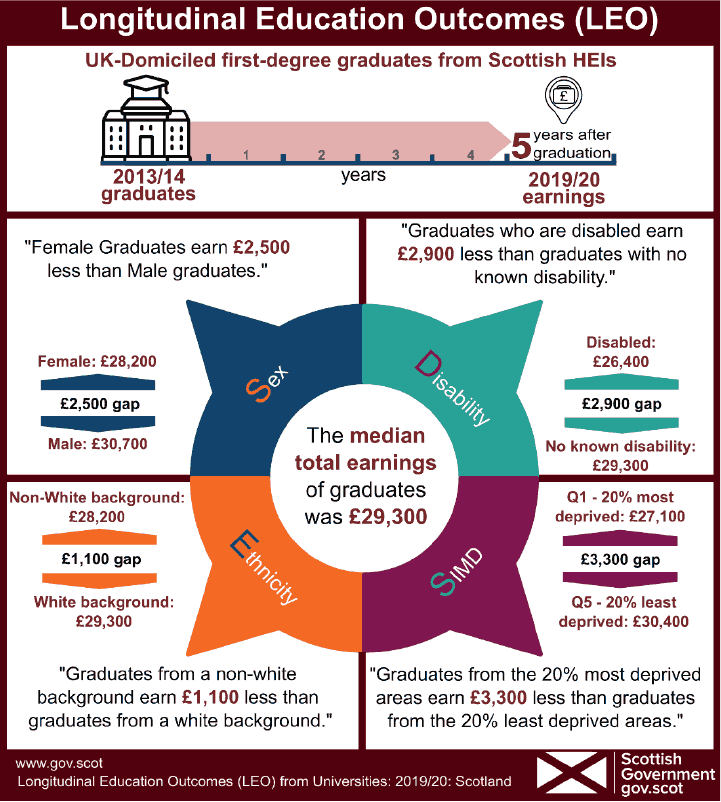Longitudinal Education Outcomes (LEO) from Universities: 2019-20: Scotland
Earnings information for UK-domiciled first-degree graduates from Higher Education Institutions (HEIs) in Scotland.
Longitudinal Education Outcomes (LEO) from Universities: 2019/20: Scotland
This Official Statistics release presents employment and earnings outcomes for graduates of Scottish Higher Education Institutions (HEIs) five years after graduation. This is the fourth publication in Scotland to use the Longitudinal Education Outcomes (LEO) dataset to track graduates as they move from higher education into the workplace. Prior Scottish Government statistical releases of LEO data can be accessed via: https://www.gov.scot/collections/colleges-universities-young-people-training-and-employment-statistics/
This publication is being released in conjunction with the Department for Education’s (DfE) release. The DfE release, which contains further detailed datasets, can be accessed via: https://www.gov.uk/government/collections/statistics-higher-education-graduate-employment-and-earnings

A graphic provides an overview of the key points from the Longitudinal Educational Outcomes publication. All figures in the graphic relate to median earnings in 2019 to 2020 tax year of UK domiciled first degree graduates from Scottish Higher Education Institutions in the 2013 to 2014 academic year, which is five years after graduation.
The headline figure shows that the median total earnings of UK domiciled first degree graduates from Scottish Higher Education Institutions who go into employment with no further study was £29,300 five years after graduation.
The graphic also provides extra detail for sex, ethnicity, disability, and the Scottish Index of Multiple Deprivation (SIMD).
Female graduates earned £2,500 less than male graduates, with female graduates earning £28,200 compared to £30,700 for female graduates. Graduates from non-white backgrounds earned £1,100 less than graduates from white backgrounds, with graduates from non-white backgrounds earning £28,200 compared to £30,700 for graduates from white backgrounds.
Disabled graduates earned £2,900 less than graduates with no known disability, with disabled graduates earning £26,400 compared to £29,300 for graduates with no known disability. Graduates from Quintile 1 – the 20% most deprived areas earned £3,300 less than graduates from Quintile 5 – the 20% least deprived areas, with graduates from Quintile 1 earning £27,100 compared to £30,400 for graduates from Quintile 5.
Contact
Email: FHEstatistics@gov.scot
There is a problem
Thanks for your feedback